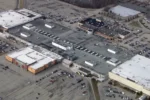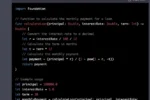Imagine flying a drone high in the sky to see a big fire, but then it accidentally crashes into a plane that’s trying to help put out the flames! That’s exactly what happened when Peter T. Akemann, a video game executive, used his drone during the wildfires in California. He didn’t just make a mistake—he broke the law! Now, he has to pay a hefty fine and do community service. This story teaches us about the importance of following rules, especially when it comes to safety during emergencies like wildfires.
| Key Information | Details | |
|---|---|---|
| Defendant’s Name | Peter T. Akemann | |
The Dangers of Drones in Emergency Situations
Drones can be exciting tools for capturing photos and videos, but they can also be very dangerous, especially during emergencies like wildfires. When Peter Akemann crashed his drone into a firefighting plane, it not only damaged the aircraft but also delayed critical firefighting efforts. This incident shows how one person’s actions can disrupt the hard work of firefighters who are risking their lives to protect communities.
Flying drones in areas where there are fires is not just against the rules; it can lead to serious accidents. The Federal Aviation Administration has strict regulations to keep airspace safe during emergencies. When drones are flown recklessly, they can interfere with planes that are trying to help. It’s important for everyone to understand that flying a drone responsibly is essential for everyone’s safety, especially during crisis situations.
Understanding Drone Regulations and Responsibilities
Drone operators need to know that there are rules they must follow. The FAA has regulations to keep everyone safe, especially during emergencies. These rules include not flying drones near wildfires and other disasters. In Peter Akemann’s case, he ignored these rules, which led to his guilty plea and community service. Knowing and following these regulations is crucial for anyone who wants to fly a drone.
While technology like geo-fencing helps prevent drones from being flown in restricted areas, it is ultimately up to the operator to use their drone responsibly. As mentioned by DJI, even with safety features, people can still override them. This means that individuals must take personal responsibility for their actions. Understanding the laws and respecting them is vital to ensure the safety of all, especially first responders.
Consequences for Reckless Drone Use
The consequences of reckless drone use can be serious and far-reaching. After Peter Akemann crashed his drone, he was ordered to pay nearly $70,000 for repairs and complete community service. This shows that there are real legal repercussions for not following the rules. Besides fines, individuals can face criminal charges and damage their reputation, which is not worth the risk.
More importantly, reckless actions like flying drones during wildfires can put lives at risk. Firefighters work hard to save lives and property, and any distraction or interference can hinder their efforts. Public officials have made it clear that ignoring drone regulations can lead to prosecution. This case serves as a reminder of the importance of being a responsible drone pilot and the potential consequences of careless flying.
The Legal Implications of Reckless Drone Usage
The incident involving Peter T. Akemann has raised significant legal questions regarding the operation of drones, especially in emergency situations. Recklessly flying a drone can lead to severe penalties, including fines and community service, as evidenced by Akemann’s sentence. The Federal Aviation Administration (FAA) has stringent regulations in place to ensure the safety of airspace during emergencies, and violations can not only hinder rescue efforts but also put lives in jeopardy.
Legal ramifications extend beyond immediate penalties; they also create precedents for future drone usage. As drone technology becomes more accessible, understanding the legal responsibilities that accompany operation is essential. This case serves as a warning to all drone enthusiasts that negligence can lead to serious consequences, fostering a culture of responsible flying that prioritizes public safety.
The Role of Technology in Preventing Incidents
The Akemann case underscores the importance of technology in preventing drone-related incidents, particularly during emergencies. DJI drones are equipped with advanced geo-fencing capabilities designed to restrict flights in sensitive areas. However, the ability to override these restrictions highlights a critical gap in user compliance. Ensuring that pilots understand and respect these technological safeguards is vital for maintaining airspace safety.
Additionally, the FAA and drone manufacturers are continuously working to improve technology that can prevent such reckless behavior. Innovations like automated flight restrictions and enhanced tracking systems could significantly reduce the likelihood of future accidents. As technology evolves, so must the regulations and educational efforts aimed at drone operators to ensure they are equipped to fly safely and responsibly.
Community Impact and Responsibility
Akemann’s actions have broader implications for the community, especially for those affected by the wildfires. The damage caused by the drone collision not only delayed firefighting efforts but also potentially endangered lives and property. This incident serves as a stark reminder of the responsibility that comes with operating any aircraft, including drones, particularly in crisis situations where every second counts.
Community service as part of Akemann’s sentence highlights the importance of accountability and making amends for reckless behavior. By participating in wildfire relief efforts, he can contribute positively to the community he disrupted. This approach emphasizes that individuals must recognize their impact on public safety and take steps to rectify their mistakes, fostering a sense of collective responsibility.
Public Awareness and Education on Drone Regulations
The crash incident has sparked discussions about the need for increased public awareness regarding drone regulations. Many drone operators may not fully understand the legal restrictions, especially during emergencies like wildfires. Educational initiatives focusing on the importance of adhering to FAA guidelines can help prevent similar incidents in the future by ensuring that drone users are informed and responsible.
Moreover, collaboration between drone manufacturers, regulatory bodies, and the community can enhance understanding and compliance. Workshops and informational campaigns can offer valuable insights into safe drone operation, particularly in high-risk areas. By fostering a culture of awareness and education, we can work towards minimizing the risks associated with drone usage in emergencies.
Frequently Asked Questions
What happened when a drone crashed into a firefighting plane during the California wildfires?
A drone crashed into a Super Scooper firefighting plane, creating a hole in its wing. This delayed firefighting efforts by 30 minutes, showing how dangerous drones can be in emergencies.
Why are drones not allowed to fly during wildfires?
Drones are banned in wildfires because they can interfere with firefighting planes. This can put firefighters at risk and slow down rescue efforts, which is very dangerous.
What is the responsibility of a drone operator?
A drone operator must follow all rules and regulations, especially during emergencies. They should always keep their drone in sight and avoid flying in restricted areas.
What penalties did Peter Akemann face for crashing his drone?
Peter Akemann had to pay about $70,000 for repairs and complete 150 hours of community service. His actions showed a lack of responsibility as a drone pilot.
How do drones know where they can and cannot fly?
Drones use special apps that connect to FAA systems to get alerts about restricted areas. These apps help pilots understand where it’s safe to fly.
What did DJI change about their drone flying rules after the crash?
DJI removed its geo-fencing policy, allowing operators more control. This decision aimed to comply with regulations, but it also means operators must be more responsible.
What should people remember about flying drones near emergencies?
People should remember to keep drones grounded during emergencies like wildfires. This respects the safety of firefighters and ensures they can do their jobs effectively.
Summary
Peter T. Akemann, co-founder of Treyarch, pleaded guilty to recklessly operating a drone that crashed into a firefighting plane during California’s wildfires. He will pay nearly $70,000 for damages and complete 150 hours of community service. Akemann launched the drone from a parking structure, losing visual contact, which led to the collision and delayed firefighting efforts by thirty minutes. Despite regulations prohibiting drone flights in disaster areas, Akemann’s actions highlighted the risks posed by unauthorized drone usage. Public officials emphasized the importance of adhering to FAA regulations, particularly during emergencies affecting first responders.







